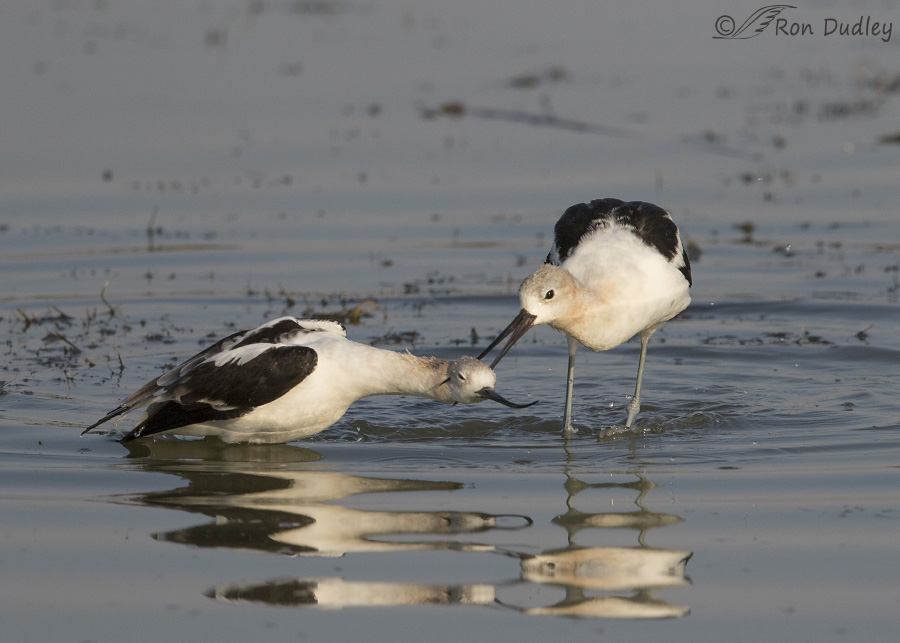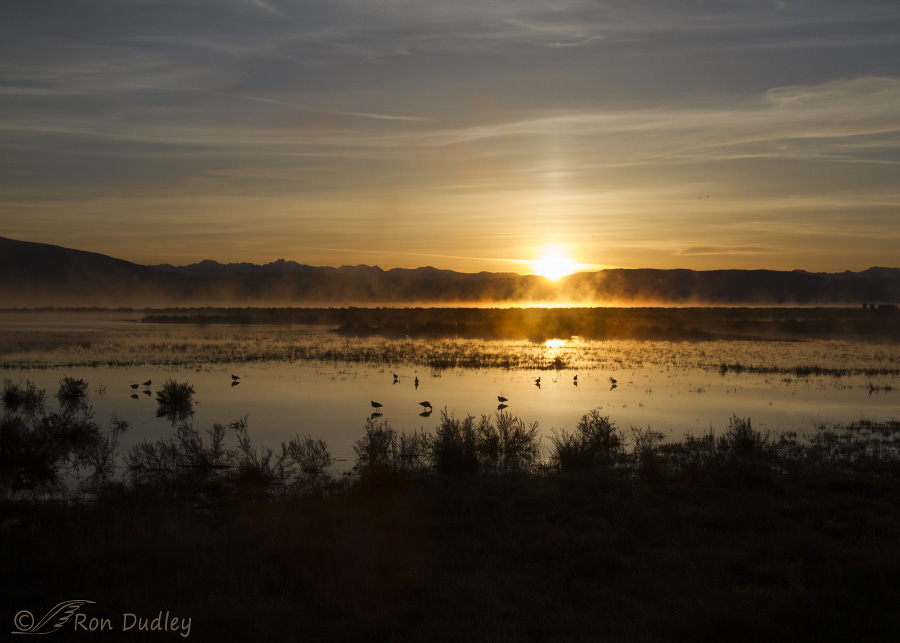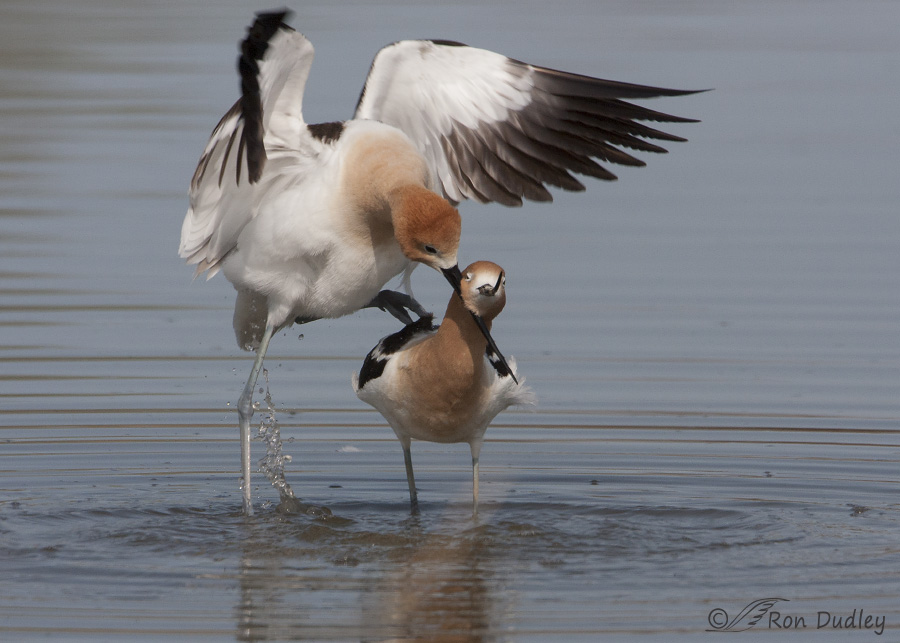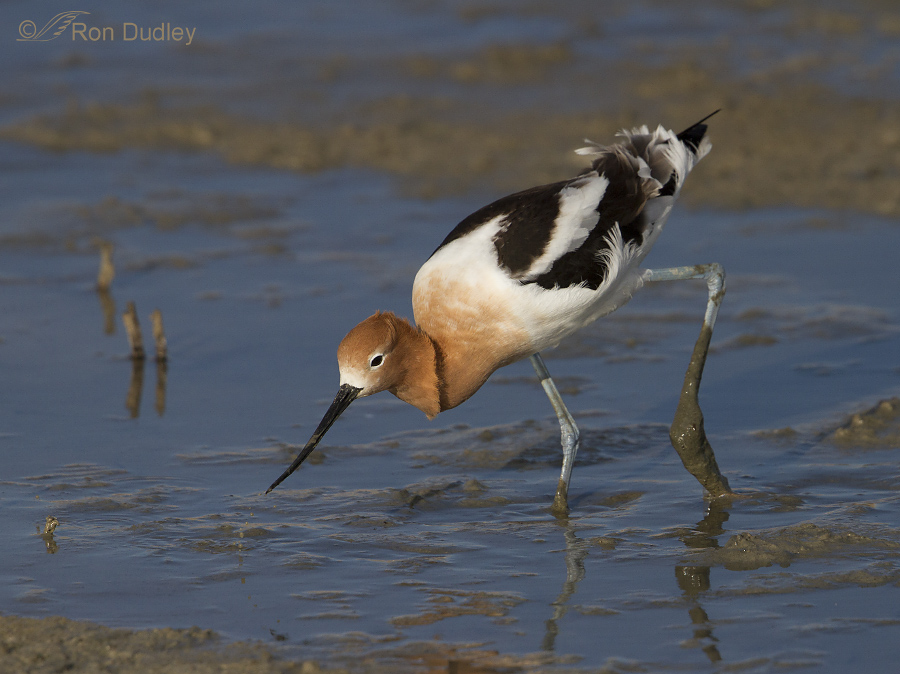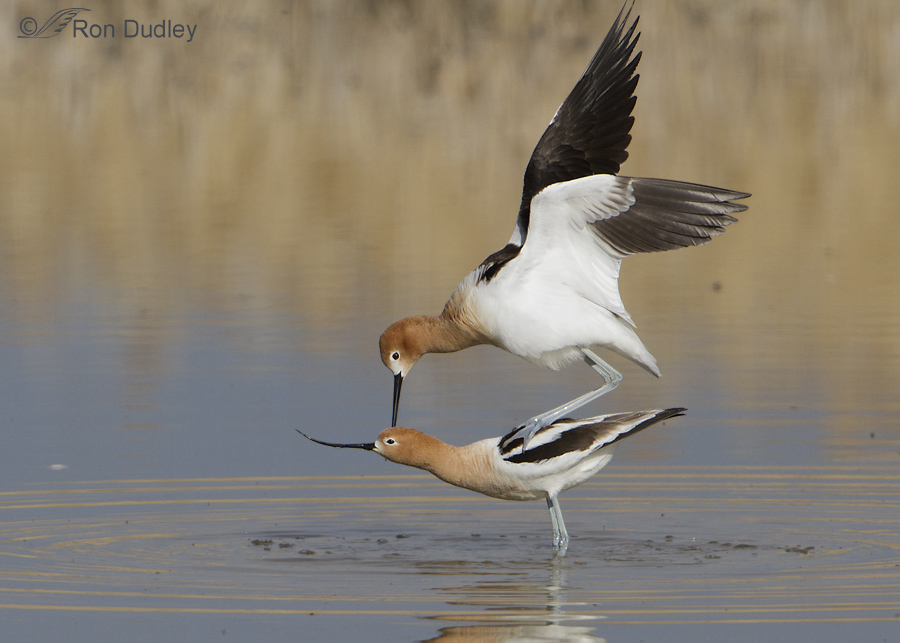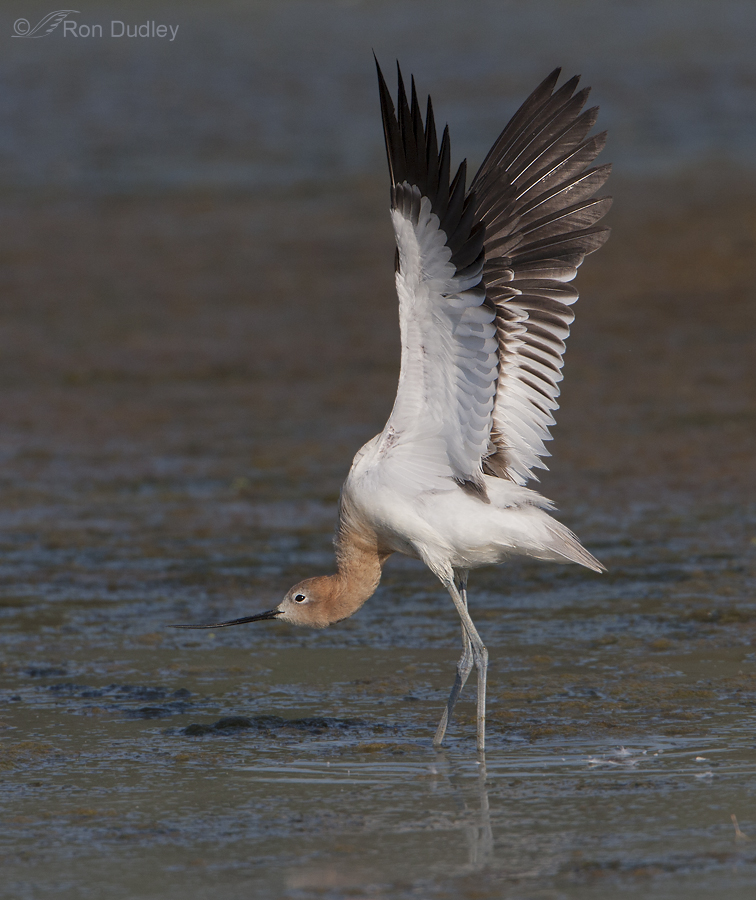Category: American Avocets
The Challenges Of Posting From The Road
American Avocets – An Awkward Mating Moment
Injured Avocet – I’ve Often Wondered What To Do In Cases Like This
Injured birds are always heart-wrenching and I like to help when I can but sometimes attempting to do so isn’t practical or even wise.
American Avocet “Scything” In The Mud
Avocet Mating Rituals
Avocet Wing-stretch – A Predictor Of Behavior
Coyotes Like Eggs For Breakfast Too
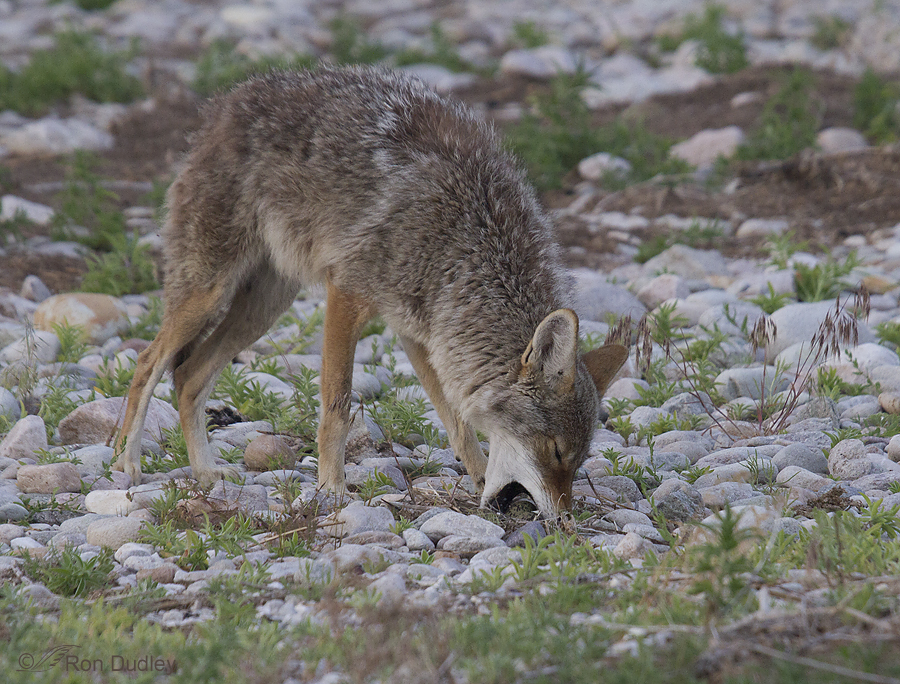
At 5:30 yesterday morning Mia and I almost decided to stay home rather than make the hour-long drive to Antelope Island because the area up north looked to be socked in with clouds (the “Farmington Curse” I’ve mentioned before) but after we picked up our traditional “shooting breakfast” (chocolate donuts) we chose to take our chances and go anyway – a choice I’m glad we made.
An Unusual Perspective On An Avocet In Flight
In my experience American Avocets are difficult subjects to get in flight because of their speed and erratic flight patterns. I’ve tried often but I sure don’t have many flight shots of the species that are very good. 1/4000, f/6.3, ISO 500, 500 f/4, 1.4 tc, natural light But I do like this one because of the sharpness of the bird, the position of the wings and feet, the nice eye contact, the pretty good exposure on a difficult subject and the somewhat unusual perspective with the viewer looking down on the bird that is flying mostly toward us. However I don’t particularly appreciate those two twigs behind the head so I’ve never posted this image before. Much as I dislike significant cloning, getting rid of those twigs has sorely tempted me more than once but in the end I just couldn’t do it (though I’ll admit to playing with it a little bit…). So I’m asking for critique on the image as presented. How much of a distraction do you think those two twigs are? Sometimes I become obsessed with imperfections (as several of you have pointed out on previous posts) and can’t see the forest for the trees. Perhaps the twigs aren’t as much of a problem as I think they might be. But either way, please be brutally honest. Thank you in advance for any thoughts on this you’d be willing to share. Ron Note: There are conflicting visual cues on this image for rotation. One would expect the twigs in the background to be vertical but when I rotate…
Mating Rituals Of The American Avocet
The moment I pulled up on this small pond at Bear River Migratory Bird Refuge last Friday I knew there’d be some opportunities for interesting behavioral shots. There were small groups of American Avocets and Black-necked Stilts that were excitedly chirping away and flying at each other in typical springtime behavior for these mixed flocks.
Amorous Avocets
Having witnessed the rituals of avocets mating many times before I knew what was about to happen when this female laid her bill down on the water’s surface and presented herself to the male. This time I got the shot. So often in the past they’ve had their backs to me when it happened.
Anticipating An American Avocet Behavior
Anticipating behaviors is often crucial for nature photographers and that’s particularly true when your subject is a lightning-fast bird. Most of us don’t need any more images where the wings have been cut off in the frame or the bird is soft due to lack of shutter speed or poor focus tracking of the bird at take-off. The American Avocet in breeding plumage is an especially lovely subject with its long recurved bill, bluish legs, cinnamon head and neck and the black and white chevron pattern on its back. But you don’t see many quality flight or take-off images of the species, partially because their flight tendencies are fast and erratic. Like many birds, avocets routinely perform single wing and leg stretches. These stretches occur when the bird is at rest and at ease. They stretch like this in the water… and on land. But this single-wing/leg stretch is not an indicator of nervousness or a precursor of take-off. Neither of the birds in these two images did so immediately after the stretch. 1/1000, f/8, ISO 500, 500 f/4, 1.4 tc, natural light, a sliver of canvas added for composition But when you see this two-winged wing stretch, expect imminent take-off. A few seconds later this bird did just that but it took off away from me and I deleted the images. Another two-wing stretch. And almost immediately after the wings came down… the bird took off. It’s not a good shot because of the angle of take-off but it illustrates my point. Here’s what Birds…
American Avocet In Flight
American Avocets have always been a very difficult flight shot for me so I only have a couple of them in my files. I think one of the factors that makes them so challenging in the air is their tendency for erratic flight. 1/3200, f/7.1, ISO 500, 500 f/4, 1.4 tc This was a grab shot taken at Glover Pond in Farmington, Utah. I like the slightly open bill and the position of the wings. This is a species that I too often ignore, whether the bird is in flight or wading. There’s just so many of them around here for much of the year that my tendency is to bypass them for more elusive subjects. Another bad habit of mine… Ron
Just A Shot That I Like… #12, American Avocet Ballet
Occasionally an image still appeals to me despite significant imperfections. In this shot the cluttered background is not ideal nor are the specular highlights on the leg of the male’s reflection but I quite like the positions of both birds, their reflections and the good separation between the avocets and the reflections. 1/1250, f/10, ISO 400, 500 f/4, 1.4 tc Fighting avocets are very difficult to photograph because typically several male combatants are separated from each other by some distance and you never know which bird is going to go after another one next and when the action begins it is blindingly fast. There’s also the problem of getting enough shutter speed and depth of field for multiple birds in action. Shooting these birds fighting is nearly always a “poke and hope” situation. Setting the scene: I had been photographing four males fighting over a single female (sexes easily identifiable because the female has a shorter and more strongly recurved bill than does the male) when this male lifted off and attacked two other males just out of frame to the right. I just happened to catch the male in a good position over the female with reflections I liked. One of the things that made this shot work is that I had enough light to use f/10 for sufficient depth of field and still get a fast enough (just barely) shutter speed to get both birds relatively sharp. Ron
American Avocet Mating Displays
I’ve been fascinated by the mating displays of American Avocets ever since I first started photographing them almost five years ago. This innate and complex choreography is almost identical in different mated pairs and from year to year. The action happens quickly and is difficult to photograph well but I think I have enough decent images now to make an informative post about it. Not all of the photos are of the highest quality but I think each of them illustrates the behavior well. I’ll present several sequences of different birds that will illustrate most of the important stages of the process. I’m not going to include my techs with these shots -some of them were taken when I first started photographing birds and I made many mistakes in my setting choices. Knowing some of these settings wouldn’t help anyone. Avocets are monogamous and pairs form up in the spring when the female persistently associates with the male until she is eventually tolerated, then accepted as a mate. The female initiates copulation by the posture you see above. It’s called Solicitation Posture and in it she holds her neck extended far out and low. At times it’s so low that much of the head, bill and neck are under water as you’ll see in a later image. Once interested, the male performs Sexual Preening where he stands close to the female and extends his neck so that his bill tip can preen his breast (always on the side closest to her). You’ll see that part of Sexual Preening in a later image but…


